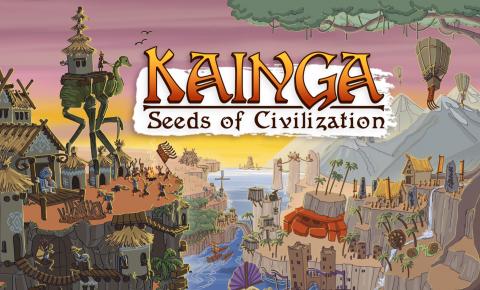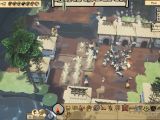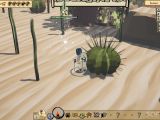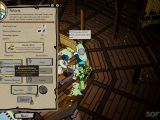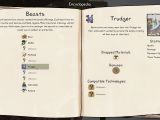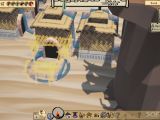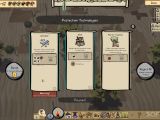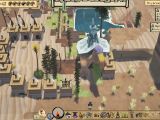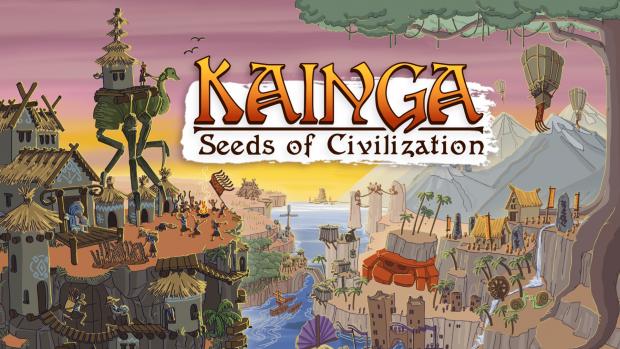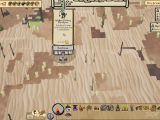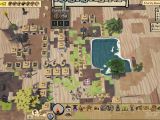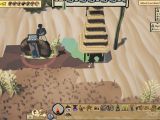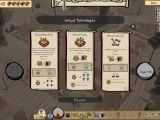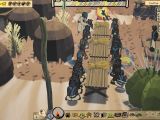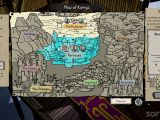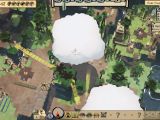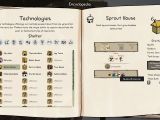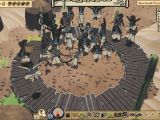My thinker is crossing the map, trying to reach an innovation source that will give me some military capabilities. But, at the same time, I complete the festival that gives me the chance to domesticate one of the beasts on the map. Which one do I want to happen first? I delay pushing the festival button to let my leader harvest that tech.
Meanwhile, my braves are setting down expansion banners, trying to get more wood without getting into any conflicts. I need the resource to complete the landmarks that will allow me to win this scenario. But there are few sources for logs across the map and my population also needs to power buildings that grow food and provide reeds and clay.
The good news is that my village is at the 60 population cap and that it has an abundance of reeds, bamboo, clay, and food. Some of my people are training to be warriors at the barracks and there’s some space to expand. I just need to hope that no environmental disaster hits as I slowly get the wood and move toward my festival victory.
Kainga: Seeds of Civilization is developed by Erik Rempen and published by Green Man Gaming Publishing. I played using Steam on the PC. The title is part of the city builder genre, but with some rogue-lite elements and a unique look.
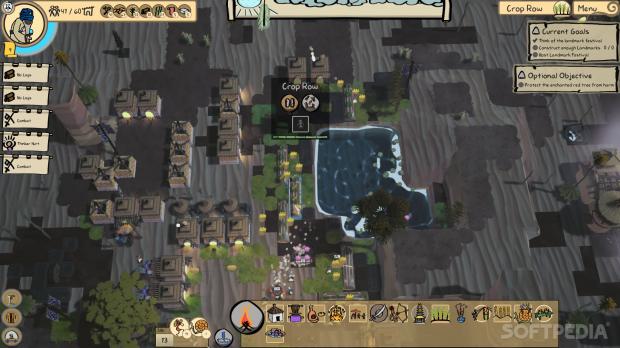
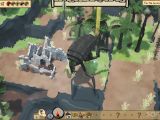
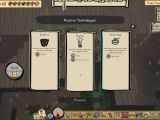
Players will become one of the thinkers, living high above the world, able to descend to lead a group of villagers to sow the seeds of their own civilization. This is a low-fantasy universe, with massive fantasy creatures but with limited innovation and no significant tech advances. There are eight biomes to play in, with six of them locked when the campaign starts. The game does a good job of creating a coherent world, with a focus on discovery and trial and error.
Gameplay mechanics are clear and easy to engage with. A few villagers gathered around the fire will harvest resources, put up buildings, make kids, battle enemies, take part in festivals, and more. Each will automatically work to improve their village and players have the options to directly command them to engage with the most important task. So far, so city builder classic.
The biggest new idea of Kainga is the Innovations system. The classic research three has been replaced with modular improvements associated with places on the maps. The player’s thinker will need to travel to their location and collect them. For every set of three, a festival innovation opens up at the central campfire. They set objectives for players, while also offering ways to significantly improve a village’s situation.
The thinker is easily killed, either by enemy villagers or environmental hazards, so keep him close to the village because death means mission failure. And before picking an innovation make sure to take a look around to see which building or tech suits the situation best.
In each Kaiga scenario, players are chasing one objective. It’s important to keep other villages neutral if not friendly via trade and tribute or to invest in barracks and maybe a few tamed creatures for war. Also, plan banner placement to secure the scarcest resources. Environmental hazards, like weather and creatures, can wreak havoc on a village.
The rogue-lite structure is clear when the player is not actually building a community. The skyship offers a place to spend all that hard-earned karma, meet other thinkers and see how they can be unlocked, explore the world via an encyclopedia, and select which sequence of scenarios one wants to play.
Simplified city building and rogue elements mix pretty well. Choices come at the player fast, the shorter scenarios can be dealt with in less than 30 minutes. There are clear limitations on what players can achieve, which creates focus. But don’t expect to build something like the pyramids or the Great Wall of China or to manage hundreds of villagers and buildings.
My biggest issue with Kainga is that it’s a little too random. It’s one thing to ask players to adapt to their environments by selecting the best tech for the conditions. That can be fun and challenging. But the game sometimes asks me to wait ten minutes, with almost nothing to do but fear an attack from neighbors, so I can get a trader to get a resource that I have no other way of obtaining.
Kainga seems like a very good introductory title for anyone who has not engaged with a city builder before. I played a lot of the first three Caesars and Pharaoh in my childhood, and I love their depth and scenarios that can run for hours. But I like that the genre can also create smaller experiences with a clearer progress curve.
Kainga: Seeds of Civilization’s presentation is highly stylized, with characters that move from pose to pose as they go about performing their tasks. It’s a clever way to deliver the complexity of a city builder for a one-man team and it makes the experience stand out. The design of the various roaming beasts stands out. The game uses a similar clean look for the world and the user interface, making it easy to get details at a glance. The sound design is less interesting, with villagers that speak made-up languages and music that adds little to the atmosphere.
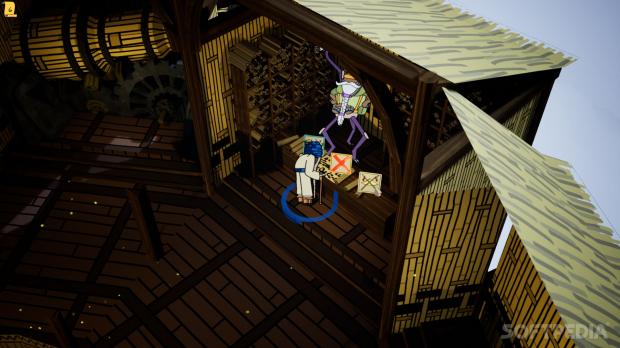
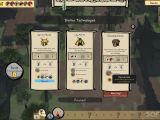
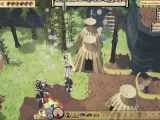
The Good
- Easy to engage with mechanics
- Rogue-lite structure
- Interesting style
The Bad
- Scenario limitations
- Simple narrative
- Needs more gameplay variety
Conclusion
But I like its ideas more than their implementation. I love city building when it’s big, complex, time-consuming and Kainga: Seeds of Civilization simply has too many limitations to keep me engaged. But its short episodes and focus on opening up new areas and new thinkers will certainly appeal to gamers who want a new take on a classic genre.
A review key was provided by the publisher.
 14 DAY TRIAL //
14 DAY TRIAL // 